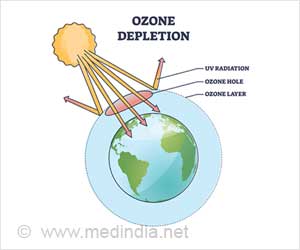A new research has indicated that rising levels of ozone in the atmosphere are a likely contributor to the global food crisis.
A new research has indicated that rising background levels of ozone in the atmosphere are a likely contributor to the global food crisis, since ozone has been shown to damage plants and reduce yields of important crop, including soybeans and wheat.
The research was conducted by William Manning of the University of Massachusetts Amherst in the US."Plants are much more sensitive to ozone than people, and a slight increase in exposure can have a large impact on their productivity," said Manning.
"The new ozone standard set by the US EPA in March 2008 is based on protecting human health, and may not be strict enough to protect plants," he added.
According to Manning, emission controls on cars have been successful in reducing short periods of high ozone levels called peaks, but average concentrations of ozone in the atmosphere throughout the year, called the background level, is increasing as polluted air masses from Asia travel to the US and then on to Europe.
Background levels are now between 20 and 45 parts per billion in Europe and the United States, and are expected to increase to between 42 and 84 parts per billion by 2100.
Plants can limit ozone damage for short periods of time by reducing the size of pores on their leaves called stomata. This reduces the uptake of ozone, but also carbon dioxide, which is used as the plants make food through the process of photosynthesis.
Advertisement
In the long term, leaf injury occurs when the amount of ozone taken in exceeds the leaf's capacity to provide antioxidants to counter its effects.
Advertisement
By growing the plants in chambers that controlled the ozone environment, the team showed that exposure to elevated ozone reduced the size and weight, or biomass, of the plants by 10 to 20 percent.
Production of seeds and oil was also reduced.
"What was surprising about this research was that plants exposed to ozone levels that peaked in the late afternoon suffered more damage than plants exposed to a steady ozone concentration throughout the day, even though average ozone concentrations were the same for both groups," said Manning.
"This shows that current ozone standards that rely on average concentrations would underestimate crop losses," he added.
Source-ANI
SPH











